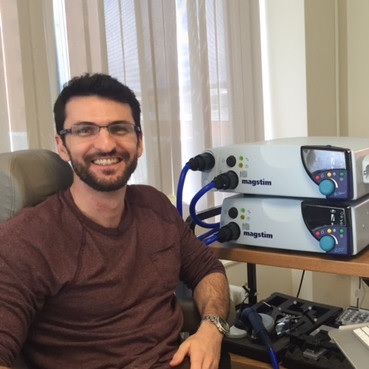In MS, a lower cortical imbalance between excitation and inhibition may serve as a predictive marker of disability and symptom severity.
“MS is a heterogeneous and complex disease, and predicting MS progression continues to be a challenge,” notes Arthur R. Chaves, PhD. “Biomarkers are essential, as they might assist with the diagnosis and prognosis of the disease, as well as elucidate the effects of interventions.”
Cortical (im)balance—an imbalance between excitation and inhibition (eg, the excitatory to inhibitory ratio) has been shown to relate to symptomatology in other conditions, according to Dr. Chaves. “In MS, however, this hasn’t been extensively explored, and we might be missing an opportunity to provide the field with a potential connectivity dysfunction in MS that could potentially be a target for future rehab therapies,” he says.
For a study published at CMSC 2023, Dr. Chaves and colleagues sought to characterize cortical excitation and inhibition (E/I) (im)balance via transcranial magnetic stimulation (TMS) among patients with MS who had mild to severe disability (N=83). They used TMS to examine cortical excitation, indexed by motor evoked potential (MEP) amplitudes, and inhibition, indexed by cortical silent period (CSP). Disability was evaluated with the Expanded Disability Status Scale (EDSS), physical function with the with the Nine-Hole Peg Test (9HPT) and walking speed (8 meters; cm/second), and cognitive function with the Symbol Digit Modalities Test (SDMT).
Lower E/I Ratios Predict Disability & Symptoms
Individuals with greater MS-related disability (EDSS, ≥3; n=24) had lower E/I ratios due to both decreased excitation (lower MEP amplitudes) and concomitant excessive inhibition (prolonged CSP) compared with those with less MS-related disability (EDSS <3; n=59). After controlling for current age, age at MS onset, disease duration, use of disease-modifying drugs, and biological sex, a lower E/I ratio significantly contributed to regression models predicting higher disability (EDSS: R2 = +24.4%; P<0.001) and poorer physical (9HPT: R2 = +17.3%; P<0.001; walking speed: R2 = +12.6%; P=0.001) and cognitive function (SDMT: R2 = +9.4%; P=0.007).
“Lower excitatory-inhibitory ratios, with lower excitation and concomitant increased inhibition, predicted the severity of symptoms and disability in MS,” Dr. Chaves says.
Targeting E/I (Im)Balance as a Biomarker
The results are of particular importance for non-invasive brain stimulation techniques that aim to treat connections in the brain and promote neuroplasticity, including repetitive TMS and transcranial direct current stimulation, according to Dr. Chaves.
“These therapies might have the potential to target E/I and potentially revert the lowered E/I ratio (lower excitation and higher inhibition) that was noticed in people with MS presenting with higher disability,” he says.
In future work, the validity of the E/I (im)balance as a potential biomarker in MS needs to be assessed with longitudinal research and trials on the effects of therapies in MS, according to the study results. Such research is necessary “to confirm the validity of this new biomarker,” Dr. Chaves concludes.


 Rebecca Shover
Rebecca Shover